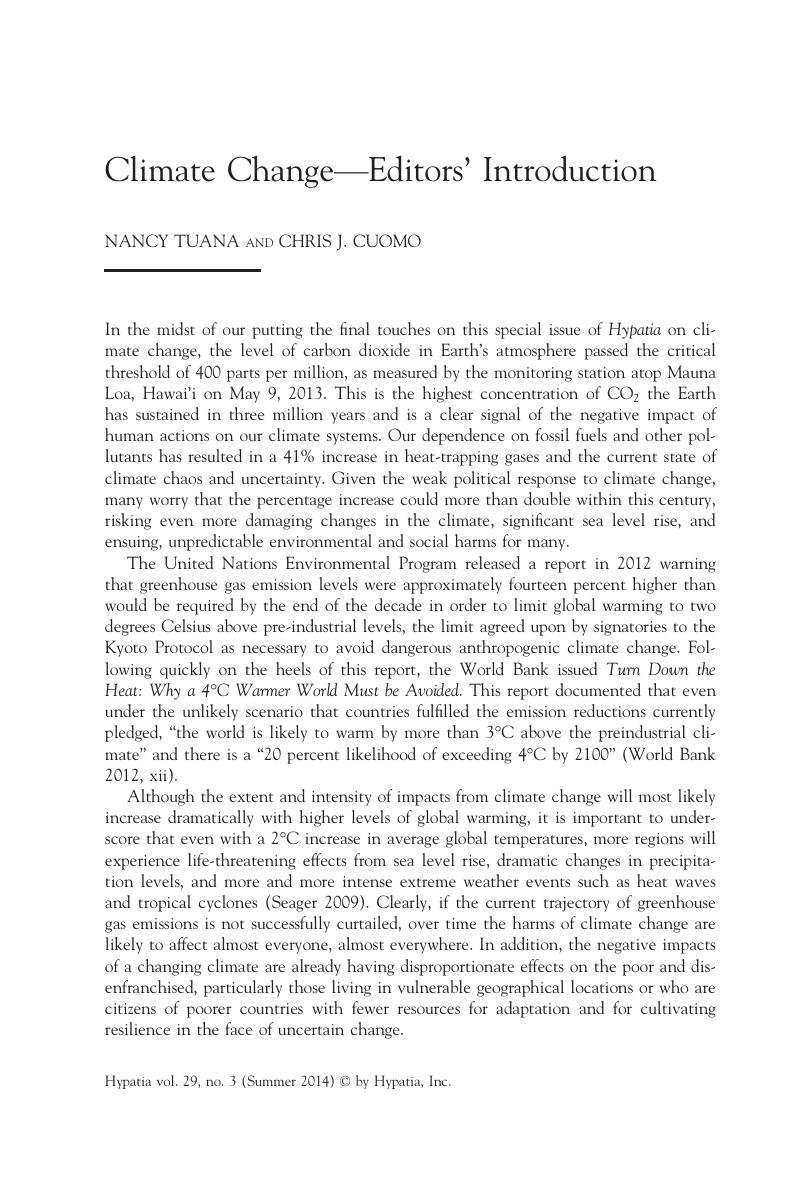Crossref Citations
This article has been cited by the following publications. This list is generated based on data provided by Crossref.
Bee, Beth A.
2014.
“Si no comemos tortilla, no vivimos:” women, climate change, and food security in central Mexico.
Agriculture and Human Values,
Vol. 31,
Issue. 4,
p.
607.
Riti, Joshua Sunday
Song, Deyong
Shu, Yang
Kamah, Miriam
and
Atabani, Agya Adi
2018.
Does renewable energy ensure environmental quality in favour of economic growth? Empirical evidence from China’s renewable development.
Quality & Quantity,
Vol. 52,
Issue. 5,
p.
2007.
Sikka, Tina
2018.
Technology, Gender, and Climate Change: A Feminist Examination of Climate Technologies.
Societies,
Vol. 8,
Issue. 4,
p.
109.
Barla, Josef
and
Bjork-James, Sophie
2021.
Introduction: Entanglements of Anti-Feminism and Anti-Environmentalism in the Far-Right.
Australian Feminist Studies,
Vol. 36,
Issue. 110,
p.
377.
Kubovski, Anna
and
Cohen Shabot, Sara
2024.
Ecofeminism and menstruation: menstrual practices with reusable menstrual products among Israeli women.
Feminist Theory,



